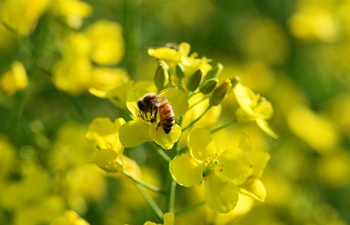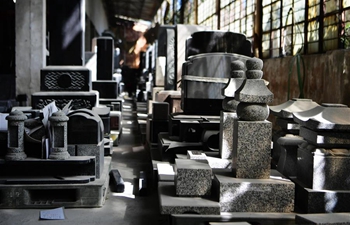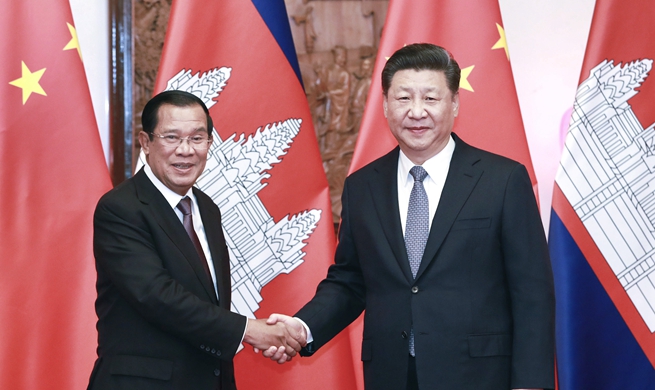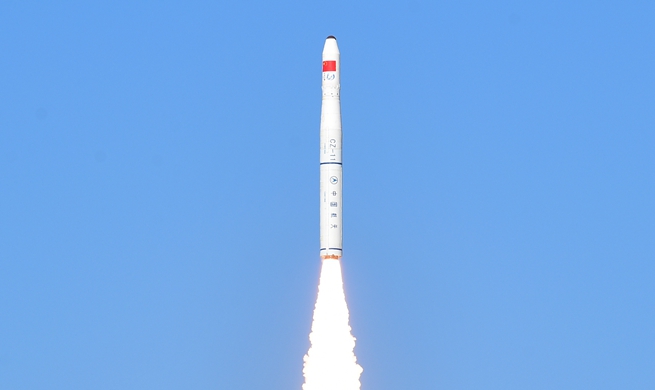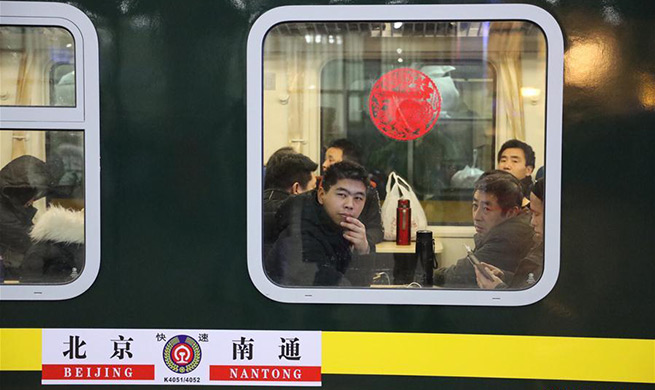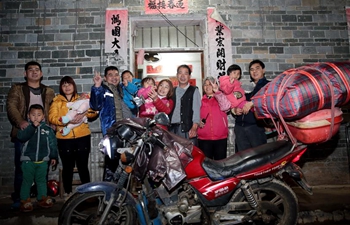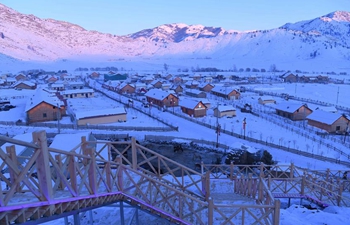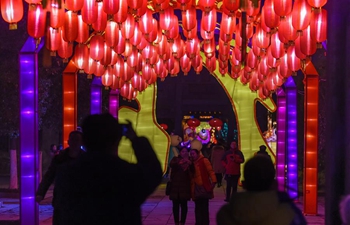DHAKA, Jan. 21 (Xinhua) -- Vakurta in Savar on the outskirts of Bangladesh's capital city of Dhaka is a place highly regarded for its exquisite jewelry and ornaments made by local artisans using methods passed on from one generation to the next.
The rural village, which lies 30 minutes' ride away from Dhaka, is Bangladesh's nucleus of traditional jewelry artisans and craftsmen.
In the village, most people are involved in the production of traditional jewelry using copper, bronze and silver.
Every home in the village seemingly doubles as a jewelry workshop and every family member is somehow involved in producing the unique artifacts that are destined for markets across Bangladesh and elsewhere in the world, especially those in the Middle East.
In recent years, hundreds of dedicated workshops have mushroomed along the narrow alleys in the village, making it a hotspot for Bangladesh's bespoke jewelry.
Artisans of all ages work relentlessly in the village putting together bangles, necklaces, earrings, rings, tiaras and countless other pieces.
The artisans residing and working in the village are renown for their incredibly fine detailing, the result of skilled hands and keen eyesight, developed over years of sitting patiently on floors while honing their heritage-based skills.
Their techniques often involve the use of a simple wooden worktable and traditional, rudimentary tools fused with modern equipment, such as blowtorches.
Craftsman Akbar Ali has been making handcrafted ornaments for about 16 years and now owns his own shop in the village.
"I learned the technique of jewelry making from my elder brother," he said, adding that the jewelry he produces here is basically made out of ordinary metals like copper, brass and zinc.
"We make our pieces using these metals as a base," Ali explained.
He said the average cost for making an ordinary piece of jewelry is about 300 taka (about 3.5 U.S. dollars) and that they sell for around 800 taka (9.5 U.S. dollars) on the market to make about 500 taka profit (5.9 U.S. dollars).
"If I can make one piece of jewelry a day then I can earn 500 taka," said Ali. "Many people in this village are leading a very good life by doing this work."
Kamal Rajbangshi came to Vakurta from the Sreenagar sub-district under the auspices of Bangladesh's Munshiganj district, located about 30 km away from Dhaka.
"For the last 25 years I have been making jewelry," he said.
"I used to make gold and silver jewelry, but now I work with copper too. Along with my parents and sister, if I work well I can earn up to 16,000 taka (190 U.S. dollars) a month."
Businessperson Sujon Sarkar said people from all over Bangladesh come to Vakurta as there are many experienced artisans and craftsmen here.
"Our daily sales are quite good," said Sarkar, owner of the Madhusudan Store.
Mohammed Zahirul Islam Rana is a regular client, purchasing wholesale items for his own stores called "Silver Sign" and "Ramsa Jarwa House," which are in the southern Barisal city, around 180 km away of Dhaka.
"I regularly visit the village to purchase pieces at a wholesale rate. In Vakurta I can purchase various kinds of goods within the same locality at reasonable prices," said Rana.
Another buyer, Abdur Rashid, from the Bogra district, about 197 km northwest of Dhaka, said he buys products in the market to sell at his shop in his home town.
He said many less affluent people are involved with making jewelry here using traditional methods.
"The future of this business is very good. Demand for handcrafted pieces of jewelry is on the rise in the north Bengal region (of Bangladesh)."
"As such, I've had to hire more people. There are now around 50 people working in my store," Rashid said.




